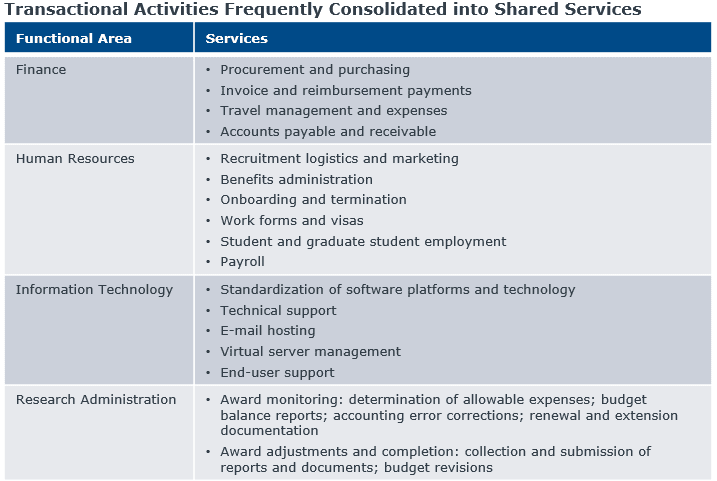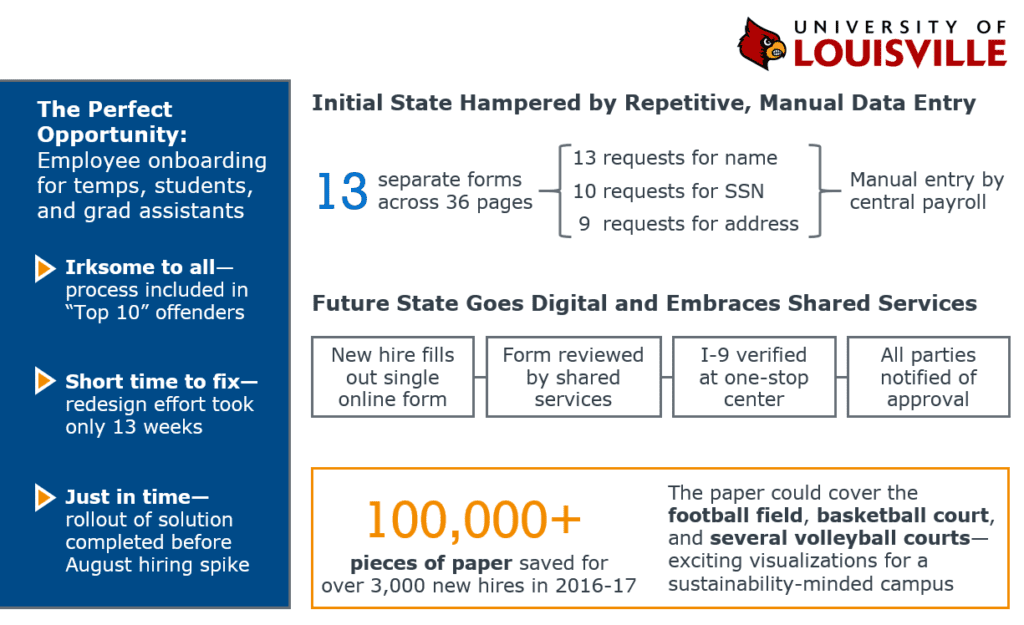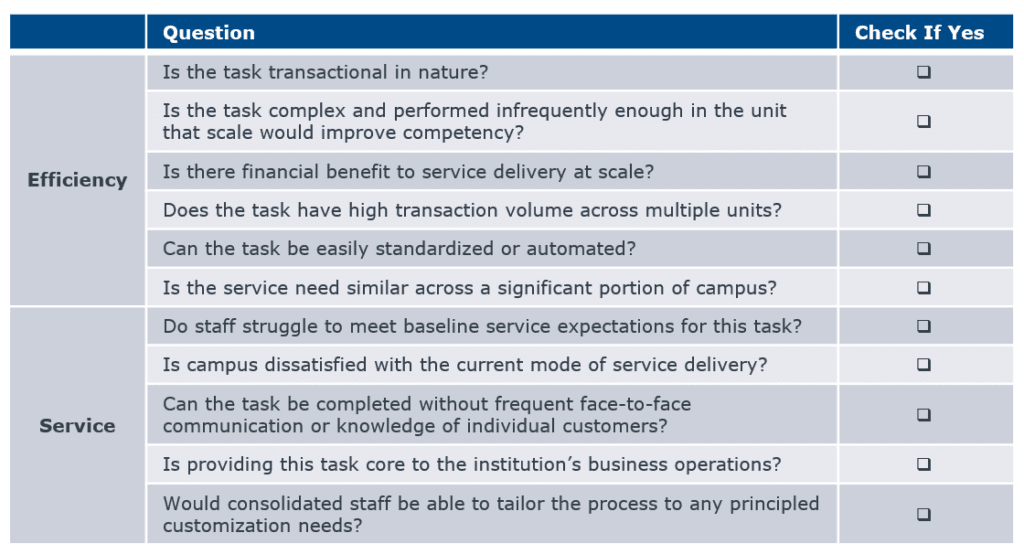Target high-volume, high-frustration processes for initial shared services migration
Shared services units are designed to reduce inefficiencies and improve the service quality of transactional business activities. As is the case with organizational models, one size does not fit all when it comes to selecting a portfolio of activities to deliver via shared services.
Some institutions have adopted an aggressive approach, consolidating all transactional administrative processes not requiring frequent face-to-face interaction or customization into a shared services center. Such a hard-and-fast rule may not work on every campus, given the complexities of migrating so many tasks at once.
Instead, leaders should focus first on high-volume, high-frustration processes. Demonstrating the value of shared services for these processes, whether in terms of cost savings, efficiency, or customer satisfaction, can pave the way for further expansion of consolidated service delivery.
This resource is part of the Design a Shared Services Model That Reflects Campus Priorities Roadmap. Access the Roadmap for stepwise guidance with additional tools and research.
Begin with high-volume processes with the greatest potential for cost and time savings
You don’t need to reinvent the wheel when designing a shared services portfolio. Rather, begin with an assessment of the “usual suspects”—the tried-and-true activities most commonly delivered via shared services across human resources, information technology, procurement, payroll, finance, and research administration.

These activities usually share a set of common characteristics, in that they:
- Have a high transaction volume across many units
- Can easily be standardized and/or automated
- Can be completed without frequent face-to-face communication or knowledge of individual customers
More recently, shared services centers have expanded their offerings into areas such as advancement, marketing, and communications. While less “transactional” in nature, consolidating these services provides greater consistency and more equitable access to support among departments.
To help leaders understand the full range of activities performed by shared services organizations, EAB has compiled profiles of 24 shared services units across 19 institutions into a single compendium. Use the compendium to explore shared services organizations at institutions with demographic or academic profiles similar to your own. Then, compare their service offerings with what you might offer.
To accelerate buy-in, prioritize processes with acute pain points
Shared services is not only about finding efficiencies through consolidation and standardization. Shared services should provide greater value to the customer than the previous method of service delivery. Using shared services to provide relief to common pain points is a tried-and-true approach to winning allies for shared services.
As an example, the University of Louisville simultaneously pursued process improvement and shared services opportunities to effective ends. First, a committee of stakeholders from across the institution identified a “Top 10” list of most frustrating processes. Next, dedicated redesign teams distinguished between steps that required involvement of unit staff and those that could be absorbed into the shared services organization. For example, in tackling the employee onboarding process for temporary employees, students, and graduate assistants, the institution eliminated 36 pages of handwritten forms with a single electronic form processed and verified in the shared services center. Shared services thus provided immediate relief to unit business managers, securing fans across the institution.
Shared Services Provides Much-Needed Relief at the University of Louisville

Use EAB’s Consolidation Diagnostic for a shared services gut check
To help you determine which activities are prime candidate for shared services, EAB created the Shared Services Consolidation Diagnostic. It provides a framework for identifying the greatest lead-off opportunities for shared services. The diagnostic assesses a process based on efficiency and service, the two main factors to consider when consolidating activities. It helps leaders answer the questions, “will providing this service at scale make the process more efficient,” and “will it improve–or at least maintain–service quality?” The activities that provide the best opportunities for scale will have at least a few “yes” answers in each category.
Consolidation Diagnostic: Asking the Right Questions to Determine Opportunities for Consolidation
Six or more “yes” responses across the efficiency and service questions below indicate that an activity is likely a good candidate for consolidation

As shared services organizations mature, they expand by both recruiting new customers and offering additional services. When revisiting “menus” of shared services functions, continue to use the diagnostic to consider new opportunities for consolidation.
This resource requires EAB partnership access to view.
Access the tool
Learn how you can get access to this resource as well as hands-on support from our experts through Strategic Advisory Services.
Learn More